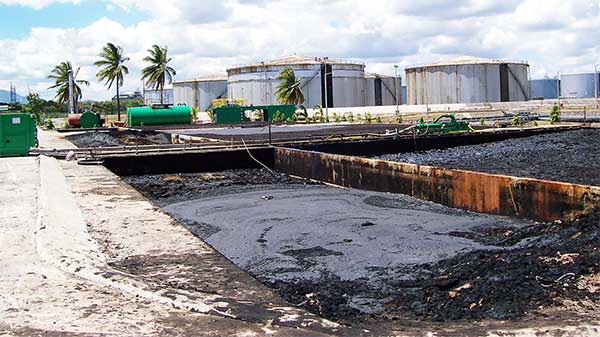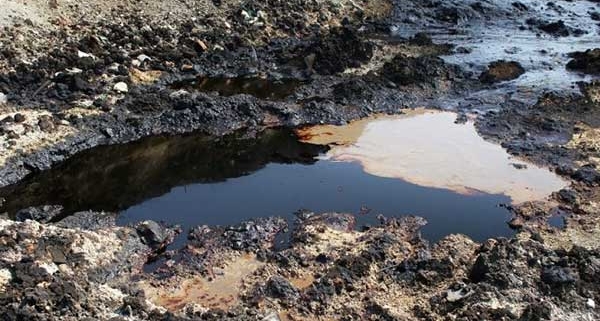What is oil sludge?
Oil sludge refers to oily solid waste generated during oil extraction, transportation, refining and oily wastewater treatment. The oil sludge generally has an oil content of 10-50% and a water content of 40-90%. In China’s petrochemical industry, an average of 800,000 tons of tank bottom mud and pool bottom mud are produced each year.
What is the hazard of oil sludge?
The oil sludge contains a large amount of odorous substances such as benzene, phenols, strontium and barium. If it is not treated directly, it will not only occupy a large amount of cultivated land, but also pollute the surrounding soil, water and air. The mud also contains a large number of pathogenic bacteria, parasites (eggs), heavy metals such as copper, zinc, chromium, mercury, salts and toxic and harmful substances that are difficult to degrade such as polychlorinated biphenyls, dioxins and radionuclides. At present, oil sand has been classified as hazardous waste by the state. The comprehensive treatment of oil-free sludge in a harmless, clean and recycling of resources has become one of the key points of environmental protection and petroleum industry at home and abroad.
How to deal with oil sludge with different oil content?

1.Oil sludge with less than 5% oil content
The oil sludge containing less than 5% oil is biologically treated. The biological method refers to the process in which microorganisms use petroleum hydrocarbons as carbon sources for assimilation and degradation, and finally they are completely mineralized and converted into harmless inorganic substances. The biological treatment method has the characteristics of not forming secondary pollution or causing pollutant transfer and low cost.
2.Oil sludge with 5-10% oil content
The sludge with a oil content of 5-10% is incinerated. The oil sludge is pretreated and dehydrated, and the concentrated sludge is dehydrated and dried by the equipment. The mud cake is sent to the incinerator for incineration. The ash is used for road construction or embedding in the designated ash landfill, and is incinerated. The heat is used for heat generation. The incineration temperature is generally controlled at 800-1000°C, the incineration time is controlled at 0.5-1.5h, and 50-100% excess air is used. After the oil sludge is incinerated, almost all kinds of harmful substances are removed, and the effect is good. However, its investment is large, the cost is high, it is often necessary to add combustion-supporting fuel, the incineration process is accompanied by severe air pollution, and the crude oil cannot be recovered, so the actual utilization rate of the incinerator in China is low.
3.Oil sludge with 10-20% oil content
Solvent extraction is used for sludges containing 10-20% oil. The process uses an extractant to dissolve the oily sludge. After stirring and centrifuging, most of the organic matter and oil are extracted from the mud by the extractant; then the extract is recovered for distillation, and the solvent is separated from the mixture for recycling and recycling. The oil is used for refining. Solvent extraction is generally carried out at room temperature. The larger the solvent ratio, the better the extraction effect, but the solvent becomes larger than the large extraction equipment and the energy consumption is relatively large. After the extracted oil sludge is subjected to distillation treatment, the heavy oil in the oil sludge can be effectively removed, and the oil removal rate can reach more than 90%. Due to the high cost, the extraction method has not been applied in practice with refinery oil sludge treatment.
4.Oil sludge with oil content greater than 30%
The oil sludge with oil content greater than 30% adopts thermal desorption method (Luoyang Building Material and Architectural Design and Research Institute) adopts this separation method and has obtained national patent). The specific process is as follows: Firstly add hot alkaline water with a temperature of 70-90°C to the oil-containing mud sand, the amount of which is added so that the ratio of the oil-containing mud to the hot water is between 1:6 and 1:1; after stirring, the oil sludge is mixed with. The water is fully mixed until the oil reaches equilibrium in the solid phase and the liquid phase, and then the water is circulated to separate the oil from the mixed phase; when the oil in the mixed phase is separated by the oil separator, the oil sludge is completed. The cleaning in the reactor, and then the slurry is subjected to a jet separation and centrifugation. The agitation (generally by mechanical means), prior to high-speed agitation in the reactor, the speed is from 250r/rain to 300r/rain, so that the water and the oil sludge are thoroughly mixed to accelerate the separation and desorption rate. Wherein the volume of the mixed phase of the oil-containing sludge and the hot water accounts for 70% to 90% of the volume of the reactor; when the oil-containing sludge completes the cleaning in the reactor. After the oil in the mixed phase is separated by the oil separation, the slurry can be separated by a jet flow and centrifuged. The oil content after solid-liquid separation treatment is three thousandths, and the treated solid phase can be used for paving, well site, brick making and other comprehensive utilization. This method not only improves the utilization rate of refined oil, but also produces good economic benefits and solves the problem of oil sludge pollution.



